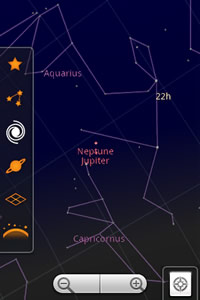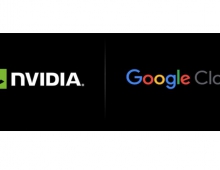
Google Enhances Its Search Engine
Google has unveiled new products that it says will push search in a new direction, the company annoucned at briefing at Google's headquarters in Mountain View, California on Thusday.
Google's second Searchology event provided an update on the progress Google has have made in search.
Google's first announcement was a new set of features that the company calls 'Search Options,' which are a collection of tools that let users slice and dice their results and generate different views to find what they need faster and easier. For example, someone may be looking for forum discussions about a specific product, but are most interested in ones that have taken place more recently. That's not an easy query to formulate, but with Search Options users can search for the product's name, apply the option to filter out anything but forum sites, and then apply an option to only see results from the past week.
The Search Options panel also gives users the ability to view your results in new ways. One view gives you more information about each result, including images as well as text, while others let you explore and iterate your search in different ways.
Another challenging problem Google has worked on is better understanding the information users get back from a search. Google calls the set of information it returns with each result a "snippet." These "rich snippets" extract and show more useful information from web pages than the preview text that users are used to seeing. For example, if someone is thinking of trying out a new restaurant and are searching for reviews, rich snippets could include things like the average review score, the number of reviews, and the restaurant's price range. Since Google can't' provide these snippets on their own, they hope that web publishers would adopt microformats or RDFa standards to mark up their HTML and bring this structured data to the surface.
Google also showed a preview of a new tool called Google 'Squared.' Unlike a normal search engine, Google Squared doesn't find webpages about a topic ? instead, it automatically fetches and organizes facts from across the Internet. Squared will be opening it up to users later this month on Google Labs.
Finally, Google unveilled the Sky Map for Android. Most new phones today can sense their location using GPS and network signals, so they could construct a map of the stars and constellations that users might expect to see overhead. But Sky Map goes even further: Android-powered phones today have access to a compass reading as well as the other sensors, and so they can also determine the direction users are facing.
"Once you have a phone with a compass ("magnetometer"), a plumbline ("accelerometer"), and you can pinpoint your position (using GPS) and your time (using a clock), that's enough to work out which direction you're pointing in the Universe," Google said.
 The result is a whole new sky mapping experience. Point the phone at any part of the sky, and Sky Map gives you a specially constructed map telling you what stars, planets and constellations you're looking at. You can even search for stars and planets by name, and the phone displays an arrow telling you how to move to face the object you're interested in. The phone can't "see" the stars as such: it works out their positions mathematically from the sensor readings. One quirky consequence of this approach is that Sky Map doesn't need a line-of-sight to find the stars and planets. It will just as reliably display stars you can't see on a cloudy night, stars you can't see because the Sun is shining, stars you can't see because you're indoors, and even stars in the opposite hemisphere that you can't see because the Earth itself is in the way.
The result is a whole new sky mapping experience. Point the phone at any part of the sky, and Sky Map gives you a specially constructed map telling you what stars, planets and constellations you're looking at. You can even search for stars and planets by name, and the phone displays an arrow telling you how to move to face the object you're interested in. The phone can't "see" the stars as such: it works out their positions mathematically from the sensor readings. One quirky consequence of this approach is that Sky Map doesn't need a line-of-sight to find the stars and planets. It will just as reliably display stars you can't see on a cloudy night, stars you can't see because the Sun is shining, stars you can't see because you're indoors, and even stars in the opposite hemisphere that you can't see because the Earth itself is in the way.
As well as being orientation aware, another way that Sky Map differs from most mapping applications is that its core data model is very small. There are only a few planets in our solar system, and 88 recognized constellations in our night sky - but more surprisingly, there are only some 6000 to 9000 stars that are visible from the Earth witch the naked eye, even under the best viewing conditions. And apart from the occasional supernova once every few centuries, star data is pretty stable. This meant that we could fit all of Sky Map's core data into a tiny 60K, all of which ships freely with the application and might never need a single update in the lifetime of your phone. When you're out in the country at night, miles and miles from the nearest city light or network connection, Sky Map is one mapping application that still works perfectly.
To try Sky Map, visit the Android market at http://www.android.com/market.

Google's first announcement was a new set of features that the company calls 'Search Options,' which are a collection of tools that let users slice and dice their results and generate different views to find what they need faster and easier. For example, someone may be looking for forum discussions about a specific product, but are most interested in ones that have taken place more recently. That's not an easy query to formulate, but with Search Options users can search for the product's name, apply the option to filter out anything but forum sites, and then apply an option to only see results from the past week.
The Search Options panel also gives users the ability to view your results in new ways. One view gives you more information about each result, including images as well as text, while others let you explore and iterate your search in different ways.
Another challenging problem Google has worked on is better understanding the information users get back from a search. Google calls the set of information it returns with each result a "snippet." These "rich snippets" extract and show more useful information from web pages than the preview text that users are used to seeing. For example, if someone is thinking of trying out a new restaurant and are searching for reviews, rich snippets could include things like the average review score, the number of reviews, and the restaurant's price range. Since Google can't' provide these snippets on their own, they hope that web publishers would adopt microformats or RDFa standards to mark up their HTML and bring this structured data to the surface.
Google also showed a preview of a new tool called Google 'Squared.' Unlike a normal search engine, Google Squared doesn't find webpages about a topic ? instead, it automatically fetches and organizes facts from across the Internet. Squared will be opening it up to users later this month on Google Labs.
Finally, Google unveilled the Sky Map for Android. Most new phones today can sense their location using GPS and network signals, so they could construct a map of the stars and constellations that users might expect to see overhead. But Sky Map goes even further: Android-powered phones today have access to a compass reading as well as the other sensors, and so they can also determine the direction users are facing.
"Once you have a phone with a compass ("magnetometer"), a plumbline ("accelerometer"), and you can pinpoint your position (using GPS) and your time (using a clock), that's enough to work out which direction you're pointing in the Universe," Google said.
 The result is a whole new sky mapping experience. Point the phone at any part of the sky, and Sky Map gives you a specially constructed map telling you what stars, planets and constellations you're looking at. You can even search for stars and planets by name, and the phone displays an arrow telling you how to move to face the object you're interested in. The phone can't "see" the stars as such: it works out their positions mathematically from the sensor readings. One quirky consequence of this approach is that Sky Map doesn't need a line-of-sight to find the stars and planets. It will just as reliably display stars you can't see on a cloudy night, stars you can't see because the Sun is shining, stars you can't see because you're indoors, and even stars in the opposite hemisphere that you can't see because the Earth itself is in the way.
The result is a whole new sky mapping experience. Point the phone at any part of the sky, and Sky Map gives you a specially constructed map telling you what stars, planets and constellations you're looking at. You can even search for stars and planets by name, and the phone displays an arrow telling you how to move to face the object you're interested in. The phone can't "see" the stars as such: it works out their positions mathematically from the sensor readings. One quirky consequence of this approach is that Sky Map doesn't need a line-of-sight to find the stars and planets. It will just as reliably display stars you can't see on a cloudy night, stars you can't see because the Sun is shining, stars you can't see because you're indoors, and even stars in the opposite hemisphere that you can't see because the Earth itself is in the way.
As well as being orientation aware, another way that Sky Map differs from most mapping applications is that its core data model is very small. There are only a few planets in our solar system, and 88 recognized constellations in our night sky - but more surprisingly, there are only some 6000 to 9000 stars that are visible from the Earth witch the naked eye, even under the best viewing conditions. And apart from the occasional supernova once every few centuries, star data is pretty stable. This meant that we could fit all of Sky Map's core data into a tiny 60K, all of which ships freely with the application and might never need a single update in the lifetime of your phone. When you're out in the country at night, miles and miles from the nearest city light or network connection, Sky Map is one mapping application that still works perfectly.
To try Sky Map, visit the Android market at http://www.android.com/market.





















